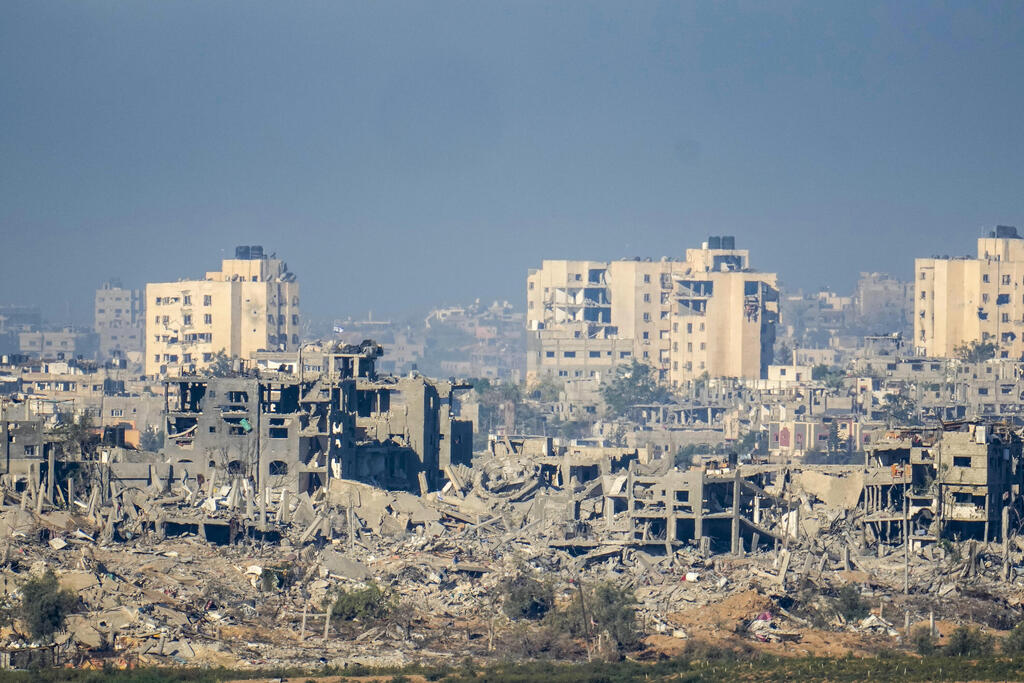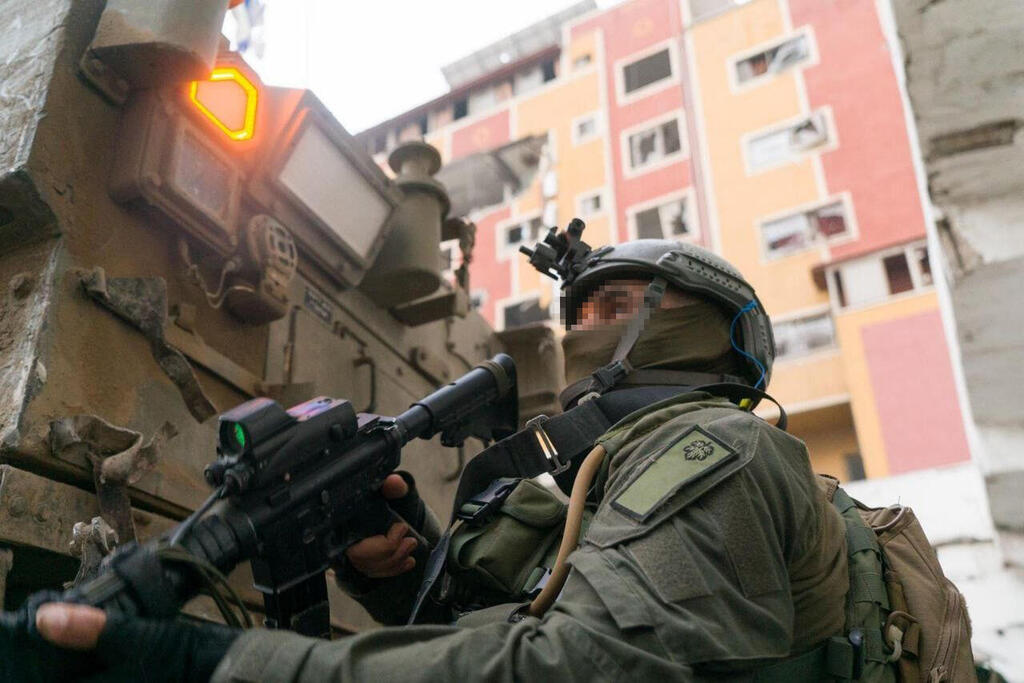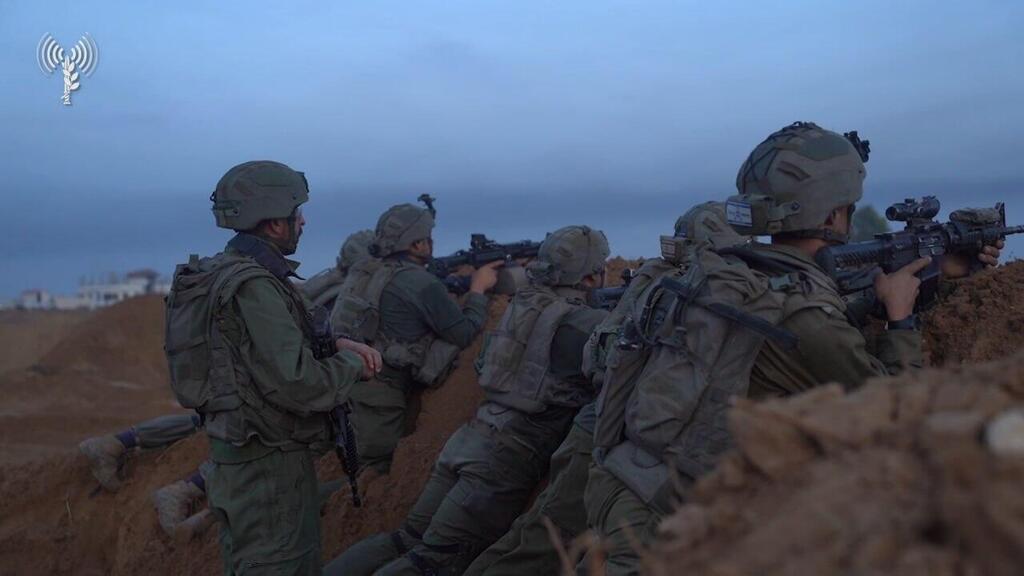Getting your Trinity Audio player ready...
The IDF’s ground operation in Gaza entered a new phase last week against the backdrop of a timeline set for the completion of the operation, mainly by the U.S. – by the end of December in the worst case, or by the end of January in the best case, assuming no catastrophic or traumatic event halts the forward progress.
More stories:
"There are signs of a crisis in Hamas, but we need more time," the military said over the weekend, with Defense Minister Yoav Gallant noting that "Hamas is showing signs of capitulation."
However, these are general, vague terms, used to prepare the Israeli public for the day when thousands of IDF soldiers will leave Gaza and return there later for limited raids throughout 2024, when the military will be in war mode all the time. This, of course, if no political arrangement is reached before that, enabling the gradual transfer of Gaza to an entity that isn’t Hamas.
In Gaza itself, the military is amazed at the scale of Hamas' strength in the region, building a de facto terror army stationed 50 minutes away from Tel Aviv over the past 14 years, including hundreds of thousands of weapons ranging from various types of RPGs that constitute the main weapon in targeting soldiers, advanced rocket launchers, strike drones and strike drones modeled to counter Israeli ones.
This also includes mortar shells, AK-47 rifles, Dragunov sniper rifles, communication devices, operational telephone lines and explosive charges in various sizes.
In Beit Hanoun in northern Gaza, located just yards away from Sderot, the IDF has been operating from the early days of the operation, achieving tactical successes. However, the risks still remain. Last week, Hamas terrorists came out of a mosque in the town, and new weapon caches were also discovered.
The IDF is targeting Hamas commanders, and most of these terrorist cells are local and small, but as Beit Hanoun can testify, it will take months to completely clear it of enemy forces- and this isn’t the location in which Hamas is at its strongest.
In addition, in searches for terrorists in Shijaiyah, soldiers found hundreds of weapons, including mortar shells and RPG missiles – as well as an IDF military Humvee Hamas seized during the October 7 attack. The Humvee is in relatively good condition and has been returned to Israeli territory.
"We are supposed to operate in Shijaiyah for 7- 10 days, and we’ve already reached its heart, succeeding in every battle and encounter with terrorists, with many clashes taking place," a senior officer from the Golani Brigade said last week.
"But it's more of a neighborhood than a town, and Hamas has its strongest battalion stationed there. Terrorists born and raised in the neighborhood are connected to it and won’t escape like in other places. In practice, it will take about half a year to completely clear Shijaiyah of terrorists and weapons," according to the official.
Significant damage has also been recorded to Hamas’ strategic sites in the northern part of the Strip, but it’s uncertain whether the damage is enough to put them out of commission. Just an hour before the cease-fire began nearly two weeks ago, soldiers bombed parts of the underground military base that Hamas built beneath Al Shifa Hospital.
The terrorists there operated beneath the hospital's departments, which the IDF ensured would continue to operate even during the 10 days of the operation in the hospital.
"The operation in Al Shifa is over," the IDF said following the cease-fire. It is worth noting that the IDF’s approach in these operations is very slow and methodical in order to avoid endangering soldiers. Only after locating underground tunnel entrances, using bulldozers, sending special drones to investigate inside, and only after then utilizing bomb-sniffing canines are soldiers allowed to enter them in a process that takes two to three days.
Even in Khan Yunis itself, a sprawling city with shorter buildings than in Gaza City, ground operations are only in their initial phases. The city is very large – counting about a million residents before the war, in addition to about a million refugees from the north crowded in its suburbs.
In the main centers of IDF activity in Khan Younis, the IDF’s special operations units are working to sever Hamas control in the area, according to a military official’s statement last week.
In the northern part of the Strip, thousands of Hamas terrorists abandoned their weapons, and fled posing as "innocent" civilians to the south under the protection of Gazan refugees. Out of about 25,000 Hamas terrorists, the IDF estimates that approximately 6,000 have been killed so far, hardly a quarter of the official Hamas figure, which doesn’t include other terrorist organizations in the area.
The IDF’s slow and methodical pace in the ground offensive has allowed the exposure of thousands of underground facilities and terror tunnels, and has had an impact on significant portions of Hamas’ military wing.
While speeches are already being prepared in Israel claiming Hamas’ elimination in Gaza, it’s worth remembering that Hamas intentionally leaves most of its terrorists in bunkers or instructs them to flee. Entire terror battalions, such as in Dir al-Balah, and other central areas of the Strip have not yet been reached in the ground offensive.
In the city of Rafah, affluent crime families also play a role, having made their fortune in smuggling operations from Sinai and controlling the Philadelphi Route that crosses between Egypt, Gaza and Israel. Along this road, hundreds of thousands of pieces of military equipment was smuggled directly from Syria and Iraq to Hamas' terrorist army in recent years.
In the IDF Military Intelligence Directorate, some have recently speculated that Hamas leader Yahya Sinwar has failed in two of his aspirations for the war plan he formulated in recent years. These aspirations include the incorporation of Hezbollah's army, Iran, thousands of Palestinians in the West Bank, and scores of Arab-Israelis in the war, who would set Israel ablaze, as well as the disintegration of Israeli society.
However, his primary goal – a murderous infiltration into Israel and the abduction of hundreds of Israeli captives – was a success. Since this war is expected to continue in its various forms for at least another year, there’s no guarantee that Sinwar's vision won’t ultimately become a reality.







